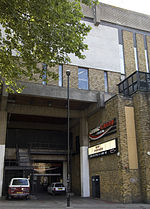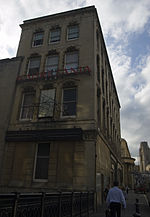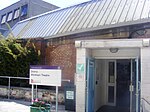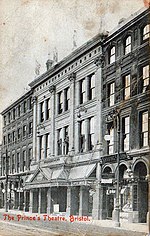Hatchet Inn, Bristol

The Hatchet Inn is a historic pub in the English city of Bristol. It is a Grade II listed building. The name is thought to originate from the axes/hatchets that the local woodsmen used in Clifton Woods.The building dates from 1606, but has undergone significant alteration since and is a grade II listed building. It is the oldest still operating pub in Bristol, though while it was still operating the Llandoger Trow was of a similar age.Since the 1980s the Hatchet has been known as one of Bristol's few alternative pubs hosting rock music upstairs. The pub has a pool room located upstairs as well as a venue which is used for clubs and can be hired for private bookings. There is a beer garden located on the side of the property, facing the O2 Academy venue.Located behind the pub was the old Cannon Cinema, which closed down in 2000. The building is now an Academy Night Club/gig venue where many well known bands have played.In the 18th century there was a rat pit at the rear of the building. In September 2006 the Hatchet celebrated its 400-year anniversary. The streets nearby were closed, staff and some regular customers dressed up in historic costumes.
Excerpt from the Wikipedia article Hatchet Inn, Bristol (License: CC BY-SA 3.0, Authors, Images).Hatchet Inn, Bristol
Kirchenweg,
Geographical coordinates (GPS) Address Website Nearby Places Show on map
Geographical coordinates (GPS)
| Latitude | Longitude |
|---|---|
| N 51.45389 ° | E -2.60039 ° |
Address
Weißes Schloß
Kirchenweg 4
90562
Bayern, Deutschland
Open on Google Maps










